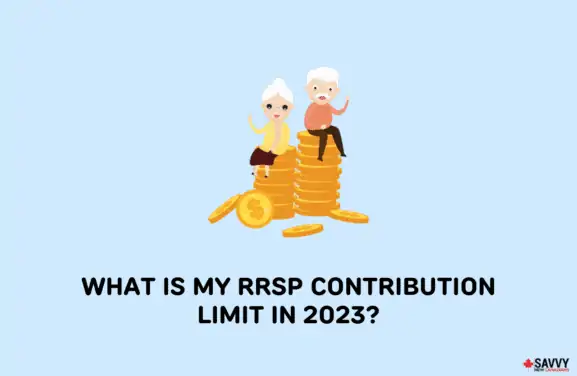Retirement planning is not something you do overnight. It takes a lot more effort and time and requires you to answer all-important questions, including how much money you need to retire and at what age you plan to retire.
The very best retirement plans take years and years to curate, implement, and deliver the goods when you finally retire.
When you start saving and investing and what you invest in can make a world of difference in how much retirement income you have access to.
And, whether you decide to retire early at 40 or 55 or wait until the traditional 65 years, the ever-increasing lifespan of Canadians and declining workplace pension plans mean you may need a lot more money in your retirement nest egg than you think.
This article covers the different types of retirement plans and retirement income sources in Canada and answers the following questions:
- How much do I need to retire in Canada?
- What is the best retirement plan in Canada?
- How do I prepare for retirement in Canada?
- How do I invest for retirement?
Retirement Plans and Income Sources in Canada
The sources of retirement income in Canada include registered savings plans, government and workplace pension plans, and personal investment accounts.
For an in-depth review of the three pillars of retirement income, read our retirement planning guide.
1. Registered Retirement Savings Plan (RRSP)
The RRSP was designed by the Canadian government to hold your retirement savings.
The money you contribute to the account during your working years continues to grow tax-free until you retire and start making withdrawals.
The amount you can contribute each year depends on your income for the previous year and unused contributions that have been carried forward from previous years.
The annual RRSP contribution limit in 2023 is $30,780.
One good thing about an RRSP is that your contributions can be deducted from your taxable income, thus lowering the taxes you pay when you file your tax return.
You can hold various investments in your RRSP, including cash (savings account), stocks, GICs, mutual funds, Exchange-Traded Funds (ETFs), bonds, and even some precious metals.
If you hold a portion of your RRSP funds in a savings account, you should ensure you get the best savings rates possible.
For example, an EQ Bank RRSP Savings account offers a competitive interest rate. It is also non-promotional, so you don’t have to worry about an offer expiring after only a few months.
You can also look at this list of RRSP savings rates in Canada.
Millennials and those with a longer time frame before they need to access their RRSP can benefit from taking on some investment risk.
You can hold stocks or ETFs and, over time, potentially earn higher returns compared to a savings account.
If you are not familiar with how to invest directly in stocks or ETFs, a robo-advisor can save you the hassle by automatically investing your money at a low fee and in a portfolio designed to meet your needs.
For example, Wealthsimple offers RRSP, TFSA, RRIF, LIF, LIRA, and other retirement plans at a low 0.40%-0.50% management fee (compared to up to 1.98% for mutual funds). You also get a bonus when you open and fund your account with $500 or more.
If you’d rather build your own retirement portfolio using stocks and ETFs and you don’t mind doing research and rebalancing, a no-commission stock trading platform like Wealthsimple Trade or Questrade are great places to start.
How you invest your retirement funds, the fees you pay, and the products you use go a long way in determining the success of your retirement plan. I will cover this a bit more later.
Related Reading:
2. Tax-Free Savings Account (TFSA)
A TFSA is a registered account you can use to save towards any financial goal, including retirement. Earnings on your account, including interest, dividends, or capital gains, are tax-free for life.
The annual TFSA contribution limit is determined by the federal government. In 2023, the annual limit is $6,500.
TFSAs are flexible, and you can invest using various securities, including GICs, stocks, ETFs, and mutual funds. You can also withdraw at any time and re-contribute the funds you withdraw in future years.
To open a TFSA account, you must be at least 18 years old. This means your TFSA investments can grow tax-free for several decades before you retire.
For someone eligible to contribute to a TFSA since it was launched in 2009, your total contribution room as of January 1, 2023, is $88,000 (assuming you haven’t contributed at all).
EQ Bank offers a high interest TFSA Savings account. You can also compare TFSA rates here.
Similar to an RRSP, you can invest in ETFs inside your TFSA using an online wealth manager like Questwealth or Wealthsimple or trade stocks and ETFs using an online brokerage service.
When investing in your TFSA for retirement purposes, you should watch out for these common mistakes.
Also, if you can’t afford to invest in both an RRSP and a TFSA simultaneously, here’s a guide on choosing between TFSA and RRSPs.
3. Canada Pension Plan (CPP)
The CPP is one of the main pillars of retirement income in Canada.
During your employed years, you are required to contribute a percentage of your income, and when you retire, you receive a monthly pension.
The CPP amount you qualify for depends on how much you paid into the plan and for how long.
The earliest age to receive CPP is 60. The standard age is 65, and you can choose to delay CPP benefits until age 70 in exchange for increased payments.
In addition to the CPP retirement pension, your spouse and children may be eligible for benefits after your passing.
The maximum monthly CPP in 2023 is $1,306.57, while the average amount paid to recipients was $717.15. As you can see, the CPP alone will not meet all your retirement income needs.
While recent enhancements to the CPP program mean it can replace up to 33% of a retiree’s average work earnings, you need to cover the shortfall through other retirement plans.
Related Reading:
4. Old Age Security (OAS)
The Old Age Security Pension is another mainstay of retirement income in Canada. This monthly benefit is paid out to eligible seniors who are 65 and older.
Unlike the CPP, you don’t contribute to the OAS. To qualify, you must:
- Be a Canadian citizen or permanent resident
- Be 65 years or older, and
- Have resided in Canada for at least ten years as an adult
OAS pension is prorated depending on how long you have lived in Canada after your 18th birthday.
Seniors who have lived here all their lives (for 40 years or longer after age 18) get the full OAS amount.
The maximum monthly OAS payment in 2023 is $691 (age 65 to 74) and $760.10 (age 75 and over). At a specified income threshold, OAS benefits are clawed back.
For example, in 2023, it is clawed back at a 15% rate starting from when your income exceeds $79,845, and you get $0 in OAS benefits when your income exceeds $129,757 (this applies to July 2022 to June 2023 payment periods).
You can delay receiving OAS until age 70 to increase your monthly payments by up to 36%.
OAS benefits are designed to cover about 15% of the average pre-retirement salary.
Related Reading:
5. Guaranteed Income Supplement (GIS)
The GIS is a part of Old Age Security benefits for low-income seniors. It is not taxable, and you may qualify if you:
- Are receiving OAS
- Are living in Canada
- Earn an income below the minimum threshold
In the second quarter of 2023 (April to June), you are eligible to collect GIS if:
- You are single, widowed, or divorced, and your annual income is less than $20,952
- If your spouse receives the full OAS pension and your combined income is less than $27,648
- If your spouse does not receive OAS and your combined income is less than $38,736
- If your spouse receives the Allowance and your combined income is less than $50,208
The maximum monthly GIS payment is $1,032.10.
6. Workplace Pensions
If you are lucky to have a workplace pension plan, you can use the income generated by this plan to fund your retirement.
Workplace pension plans come in various formats. Broadly, you have defined benefits pension plans and defined contribution pension plans.
A defined benefit pension plan has a pre-determined payment when you retire. A defined contribution plan has a specific amount you contribute, but it does not specify what your payment is going to be.
Group RRSPs, pooled registered pension plans (PRPPs), and deferred profit-sharing plans (DPSPs) also fall under workplace pension plans you can use.
If your employer offers to match your contributions to a retirement savings plan, always take them up on the offer. Don’t leave cash on the table.
7. Personal Savings and Investments
In addition to using the TFSA and RRSP accounts to save towards retirement, you can also use personal non-registered accounts.
While these accounts are not tax-free or tax-deferred, they are great for boosting your retirement pot if you have already maxed out contributions to your tax-advantaged accounts.
A non-registered investment account is very flexible and can hold pretty much any investment security, including alternative investments such as real estate, private equity, peer-to-peer lending, and cryptocurrencies like Bitcoin.
What is the Best Retirement Plan in Canada?
In my opinion, the best retirement plan in Canada is a combination of the seven retirement income sources I have discussed above.
A hefty RRSP, TFSA, non-registered savings plan, and workplace pension would definitely make for a comfortable retirement. Add in the CPP and perhaps even OAS (if you can tax-manage it), and you are all set.
That said, the reality is that the average Canadian is not likely going to be able to achieve this feat.
So, what’s the best retirement plan when you have to pick and choose?
If you earn a modest income ($40,000 or less), consider maxing out your TFSA account first, then use up your RRSP contribution room.
If you are a high-earner, max out your RRSP account and then TFSA. Your higher marginal tax rate means you save more through tax deductions, and you can put your tax savings (tax refund) in your TFSA or other investment accounts.
Regardless of your income level, it generally makes sense to take your employer up on any matching contributions to workplace savings or pension.
Other than making contributions to the CPP during your working years, how it is invested is out of your hands.
The OAS is a baseline senior benefit, and you only miss out if you have a higher-than-average income or you do not meet the residency requirements.
How Much Do I Need To Retire in Canada?
Perhaps the most asked question by prospective retirees is: “how much income do I need to retire?”
While I have previously answered this question in the article on retirement income calculation, I will summarize it again below.
The retirement savings you need depends on the lifestyle you plan for retirement, how long you expect to live, whether you will continue to work part-time, the government benefits you qualify for, and more.
The most popular strategy for calculating your retirement income needs is referred to as the 4% withdrawal rule. Basically, this rule assumes that you should have a 25x multiple of your annual retirement spending saved away.
For example, if you plan to spend $40,000 per year in retirement, your retirement pot should hold $1 million today ($40,000 × 25).
There are various other rules, but nothing is set in store. What works for you may not work for someone else.
Also, we have not considered the government benefits and pensions you will receive. You can deduct these from your total annual income needs and calculate a 25 × multiple for the rest.
How To Invest For Retirement
Canadians have access to various financial tools and platforms they can use to invest.
Broadly speaking, you can use your traditional bank to purchase mutual funds or use a robo-advisor to invest in low-cost ETFs at a lower management fee than mutual fund managers.
Both options are hassle-free, and you get the benefit of access to financial advice.
Given that higher fees have the potential to lower your investment earnings over time, I personally prefer using robo-advisors (online wealth managers) like Wealthsimple.
These services offer the same protections as the big banks, and your funds are insured against insolvency through the Canadian Investor Protection Fund (CIPF) for up to $1 million.
When you open and fund an account with Wealthsimple using our exclusive promo link, you get a cash bonus. Learn more about this service in our detailed review.
Other top-rated robo-advisors in Canada are:
- Questwealth: Invest up to $10,000 for free for one year. You can also read our review.
- Justwealth: Learn more here.
There are potential cost savings to be had if you are comfortable with managing and trading your investment portfolio using a discount brokerage account.
That said, it can also be challenging to stay disciplined, and over-trading or market timing strategies can lead to unnecessary losses or significant trading fees.
If you are a knowledgeable and disciplined investor, the following trading platforms can save you on fees:
- Wealthsimple Trade: This is Canada’s only commission-free brokerage platform. You can buy thousands of stocks and ETFs for free. Open an account or read our review of Wealthsimple Trade.
- Questrade: This is the largest independent brokerage platform in Canada. It offers free ETF purchases and competitive fees when you buy/sell stocks or sell ETFs. Join here or read this detailed Questrade review.
Canada’s biggest banks also offer trading platforms. Learn about them in the links below:
Financial Planning Calculator And Other Aspects of Retirement Planning
Many retirement calculators online show how much money you need to save before you can retire comfortably.
For an in-depth retirement income calculator that takes your government benefits into account, take a look at this one by the Canadian Government.
In addition to planning your finances, other factors come into play, including:
- Taxes: You may be able to increase your family income through income-splitting and other tax strategies
- Estate Planning: Do you have a Will? Learn about online Wills here or get a 20% discount when you create a Will with LegalWills and enter our promo code SAVVY20.
- Insurance: Life insurance is a key part of your financial planning. Find out how to get the best life insurance quotes.
You can take a look at this retirement checklist for more ideas.
Retirement Planning in Canada FAQs
You can calculate how much money you need to retire in Canada by using the 4% rule, 25 × income multiple rule, 10 × pre-retirement salary rule, or 70% of working income rule.
Whether you plan to retire at 55 or 60 years old, how much you will need depends on how much income you plan to spend per year.
Using a 4% withdrawal rate of $40,000 per year, $1 million can last you for a lifetime. Note that the 4% rule assumes you are earning high returns on average on your investments (~7%).
To achieve this level of returns, your portfolio has to invest in risky assets such as stocks. Your real return must be at least 4% after factoring in the inflation rate.
They include government benefits and pensions, workplace pensions, registered savings plans (e.g. TFSA and RRSP), and personal non-registered retirement accounts.
In addition to the CPP and OAS, here is a list of provincial benefits for seniors and for newcomers.
How much income do you think YOU would need in retirement?




